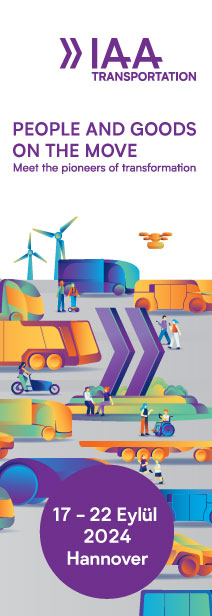In the outdoor New Mobility World arena at the fair, Knorr-Bremse will be demonstrating a
prototype truck that can drive along motorways/freeways in fully autonomous mode. Traffic
conditions permitting, it can also automatically overtake a slower preceding vehicle. In line
with the motto “We pave the road to automated driving”, at booth 30 in hall 17, the company
will be showcasing product and system solutions that lay the foundations for such highly
automated vehicle systems, as well as illustrating how the complex automated functions
can be rendered fail-safe in a cost-effective way.
According to Dr. Peter Laier, Executive Board Member of Knorr-Bremse AG responsible for
the Commercial Vehicle Systems division: “In the next few years we’re going to see a gradual
shift from more and more versatile driver assistance systems to automated driving and
thus to vehicles that can temporarily take over the driving completely, freeing up the driver
to handle other tasks or get some rest. The key to engineering such systems is a deepseated
understanding of commercial vehicle dynamics, which are far more complex than in
the case of cars. The millions of ABS, EBS, ESP, emergency braking and lane departure
warning systems that we have in the field bear lasting witness to our expertise in this area
and form the basis for us to leverage the potential that exists in driver assistance systems
and automated driving.”
Dr. Jürgen Steinberger is a Member of the Management Board of Knorr-Bremse Commercial
Vehicle Systems where he is responsible for the field of automated driving: “At the IAA
we will be demonstrating our sovereign command of all three dimensions of highly automated
driving functions – environment recognition, decision-making and actuation. Another
decisive aspect is a smart redundancy concept: When the vehicle takes control, everything
must be designed in a way that the vehicle cannot run out of control even if an electronic
subsystem fails. Simply doubling up the critical components, as was originally demanded,
makes no economic sense. At the IAA we will be demonstrating how a modern braking system
can even temporarily replace the steering. Our redundancy concept for automated driving
illustrates how to combine outstanding performance with cost effectiveness.”
Driver assistance systems help avoid accidents
In 2015, Knorr-Bremse brought the first ever emergency braking system to market that employed
data fusion to evaluate a combination of radar and video data, achieve clearer definition
of obstacles and reliably prevent “false positives” – erroneous system activation.
DAC28270042/1 026585-1229
2/3
Knorr-Bremse Group
At the IAA Commercial Vehicles show in 2016, Knorr-Bremse presented a prototype trucktrailer
rig that was able to perform Autonomous Yard Maneuvering, covering a predefined
course fully autonomously within an enclosed depot. That same year, Knorr-Bremse also
presented a blind spot assistant that uses radar and cameras to monitor the sides of the
vehicle. Instead of using door mirrors, the view along the side of the vehicle is shown on
displays which, when a potentially hazardous situation is identified, can enlarge the relevant
portion of the image. The driver receives a visual or acoustic warning signal if there is a cyclist
or pedestrian in the danger zone. Figures from the German Federal Statistical Office
for 2016 show that 17% of accidents involving goods vehicles occurred during “turning off,
turning round, reversing, maneuvering or moving off”. A blind spot detection system like the
blind spot assistant from Knorr-Bremse could bring about a significant reduction in the
number of accidents involving bodily harm.










